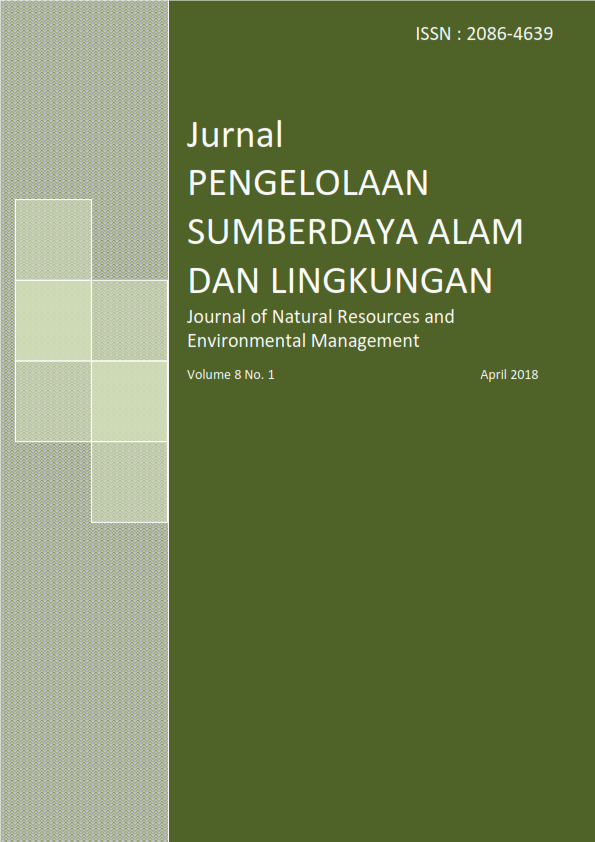IDENTIFIKASI PREDIKTOR POLA HIDUP BERSIH DAN SEHAT SISWA SEKOLAH MENENGAH: EKSPLORASI DATA SEKUNDER LOMBA SEKOLAH SEHAT
Abstract
Strengthening character education becomes important thing nowadays as stated in Presidential Decree No. 87 year 2017. Student’s clean and healthy lifestyle reflects from their mind and character. To implement the character education, there are many factors involved in it. The purpose of this research is to identify the variable predictors of student’s clean and healthy environment considering teacher role model variables as intervening variables. The analysis of this relationship pattern is based on an interactionist perspective arguing that student behavior does not occur in isolation, but as an impact of interaction results. School environment is faced daily by students. The intensity of this interaction can lead to healthy and hygienic behavior habits through teacher’s role model. Regression analysis used to prove the perspective of interactionist is based on secondary data of Healthy School Competition period 2016 and 2017. This competition is a junior high school and high school/vocational school competitions representing the province to be included in the national competition. The data used in this study comes from an observation instrument filled by Healthy School Competition Officers at the National level, and students at schools designated as provincial representatives. Students who were selected as subjects were selected randomly. By using regression analysis, empirical tendency showed that school environment factor namely clean and healthy environment become predictor to the formation of student’s clean and healthy behaviour.
References
Bakhurst, D., 2011. The formation of reason. Oxford: John Wiley & Sons Ltd. 2nd Ed
Bowen, G.L, N.K. Bowen, J.M. Richman, 2000. School size and middle School students’ perceptions of the school environment. Social Work in Education 22(2), pp. 69-82.
Calhoun, C., J. Gerteis, J. Moody, I. Pafaff, Virk, 2002. Comporary Sociological Theory. Oxford: Blackwell Publsihers Ltd.
Dumais, S.A., 2002. Cultural capital, gender, and school success: The role of habitus. Sociology of Education 75(1), pp. 44-68.
Eley, C., 2006. High-Performance School Buildings dalam Howard Frumkin, Geller, Robert J.; Rubin, I. Leslie. Safe and healthy school environments. Oxford: The Oxford University Press, pp. 331-350.
Hier, P., 2005. Contemporary Sociological thought: Themes and Theories. Toronto: Canadian Scholars Press Inc.
Jaakkola, J.K., 2006. Temperature and Humidity dalam Howard Frumkin, Geller, J. Robert, I. Rubin, Leslie. Safe and healthy school environments. Oxford: The Oxford University Press. pp: 46-57.
[Kemendikbud] Kementerian Pendidikan dan Kebudayaan, 2016. Rencana Strategis Kementerian Pendidikan dan Kebudayaan tahun 2015-2019. Jakarta: Setjen Kemendikbud.
[Kemenkes] Kementerian Kesehatan, 2015. Rencana Strategis Kementerian Kesehatan 2015-1019. Jakarta: Kementerian Kesehatan RI.
Kusuma, M., 2013. Hati-hati jajan di jalanan. [terhubung berkala] Kompas 17 [13 Oktober 2013].
Larasati, S.B., 2013. 40% siswa SMP merokok. [terhubung berkala] Media Indonesia 14 [13 September 2013].
Mabbott, J.D., 2010. Reason and desire dalam Dearden R.F, P.H. Hirst, R.S. Peters, Education and the development of reason. New York: Routledge.
Moedjiono, A.W., 2013. Jaminan Kesehatan Nasional: Memenuhi kebutuhan dasar rakyat. [terhubung berkala] Kompas 5 [28 Juni 2013].
Quinton, A., 2010. The foundations of knowledge dalam R.F.Dearden P.H.Hirst and R.S. Peters. Education and the development of reason. London: Routledge & Kegan Paul. pp. 205-226.
Schweigh, J., 2014. Cross-level measurement invariance in school and classroom environment surveys: Implications for policy and practice. Educational Evaluation and Policy Analysis 36(3), pp. 259–280.
Spillane J.P., T. Hallett, J.B. Diamond, 2003. Forms of capital and the construction of leadership: Instructional leadership in urban elementary schools. Sociology of Education. 76(1), pp.1 -17.
Susanto C.E., 2014. 90% jajanan di SD tidak terawasi. [terhubung berkala] Media Indonesia 15 [21 November 2014].
Thaman K.H., 2002. Shifting sights: The cultural challenge of sustainability. International Journal of Sustainability in Higher Education 3(3), pp. 233-242.
Warburton, K., 2003. Deep learning and education for sustainability. International Journal of Sustainability in Higher Education 4(1), pp. 44-56.
Yoon J.S., 2002. Teacher characteristics as predictors of teacher-student relationships: Stress, negative affect and self-efficacy. Social Behavior and Personality 30(5), pp.485-492.
Authors
Authors who publish with this journal agree to the following terms:
- Authors retain copyright and grant the journal right of first publication with the work simultaneously licensed under a Creative Commons Attribution License that allows others to share the work with an acknowledgement of the work's authorship and initial publication in this journal.
- Authors are able to enter into separate, additional contractual arrangements for the non-exclusive distribution of the journal's published version of the work (e.g., post it to an institutional repository or publish it in a book), with an acknowledgement of its initial publication in this journal.
- Authors are permitted and encouraged to post their work online (e.g., in institutional repositories or on their website) prior to and during the submission process, as it can lead to productive exchanges, as well as earlier and greater citation of published work (See The Effect of Open Access).





